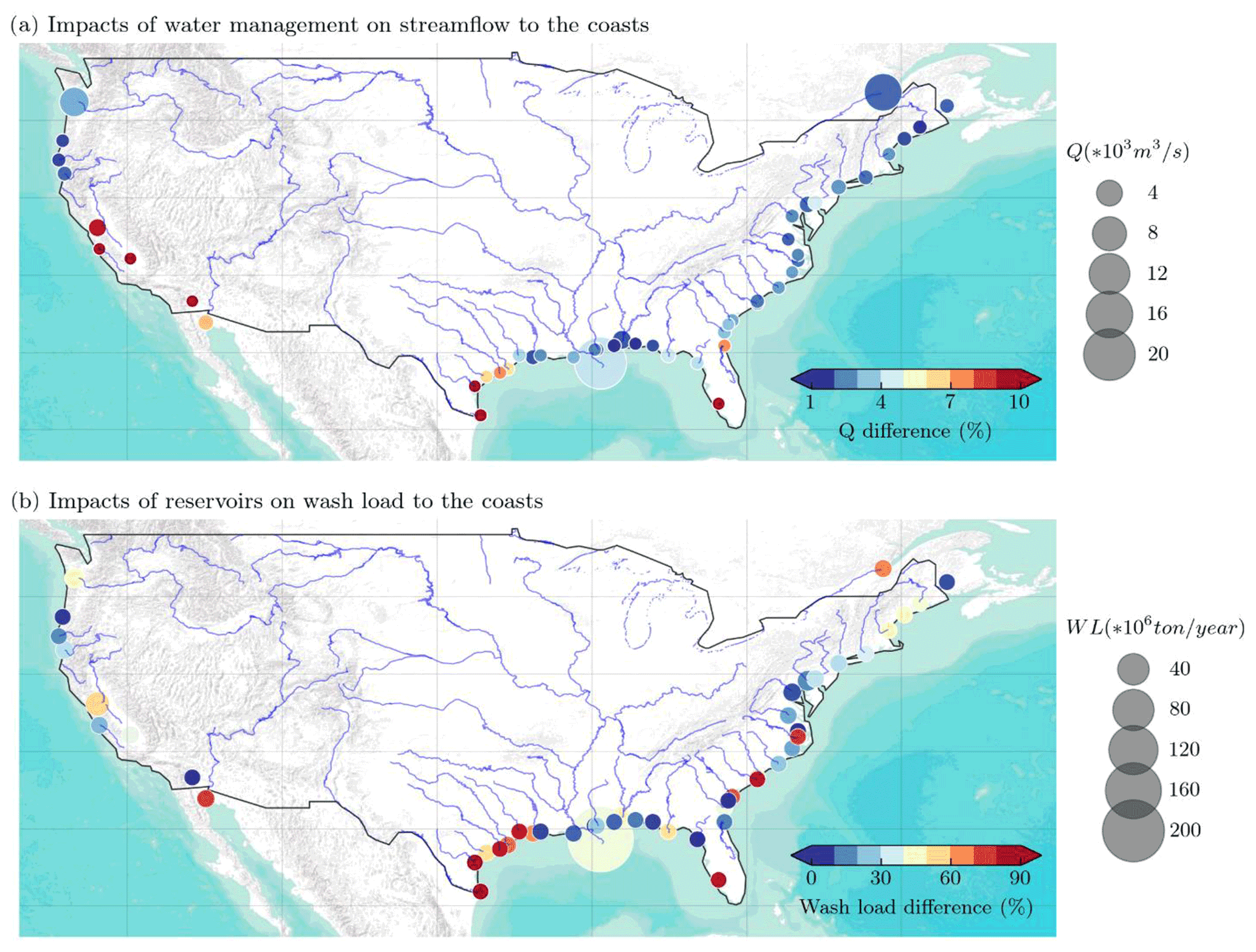A new large-scale suspended sediment model and its application over the United States
The Science
Most Earth System models lack representations of suspended sediment and the associated carbon and nutrient fluxes because very few sediment models have been designed for regional or global applications, with explicit accounting for the effects of reservoirs prevalent in most river systems. To fill this gap, a new process-based suspended sediment module has been developed within MOSART, denoted as MOSART-sediment (Fig. 1), based on a physically-based, flexible modeling framework that allows for explicit and separate representation of the first-order processes and their driving factors.
The Impact
The model reasonably well captures the long-term balance and seasonal variations of suspended sediment at many stations in large river systems. Suspended sediment discharge in managed rivers is found to be affected more by reservoirs’ direct trapping of sediment particles than by their flow regulation. The new sediment module enables future modeling of carbon and nutrients carried by fine sediment discharge along the river-ocean continuum to close the global carbon and nutrient cycles.

Figure 2. Impacts of reservoirs on (a) streamflow and (b) very-fine-sediment discharge to the coasts. Each dot represents the river mouth of a river system. The larger the dot size, the larger the simulated freshwater or suspended sediment discharge. The color of each dot represents the percentage of freshwater or suspended sediment discharge that is reduced by reservoirs or water management.
Summary
This study introduced a new multi-process river sediment module for the Earth System models. The module has been added to MOSART, the river transport model of DOE’s Energy Exascale Earth System Model (E3SM). Application and validation over the contiguous U.S. indicated a satisfactory model performance over large river systems, including those heavily regulated by reservoirs. Modeling results further showed that suspended sediment discharge through managed rivers to the coasts is affected more by reservoirs’ direct trapping of sediment particles than by their flow regulation (Fig. 2). This new sediment module enables future modeling of the transportation and transformation of carbon and nutrients carried by the fine sediment along the river-ocean continuum to close the global carbon and nutrient cycles. The model can also be used to explore how extreme events such as floods and droughts and their long-term changes may influence sediment delivery to the coast and hence the biogeochemistry of the coastal ecosystem.
Publication
Li, Hong-Yi, Zeli Tan, Hongbo Ma, Zhenduo Zhu, Guta Wakbulcho Abeshu, Senlin Zhu, Sagy Cohen, Tian Zhou, Donghui Xu, and L. Ruby Leung. 2022. “A New Large-Scale Suspended Sediment Model And Its Application Over The United States”. Hydrology And Earth System Sciences 26 (3). Copernicus GmbH: 665-688. doi:10.5194/hess-26-665-2022.
Funding
- This work was supported by the Earth System Model Development program area of the Department of Energy, Office of Science, Biological and Environmental Research program.
Contact
- Hongyi Li, University of Houston



